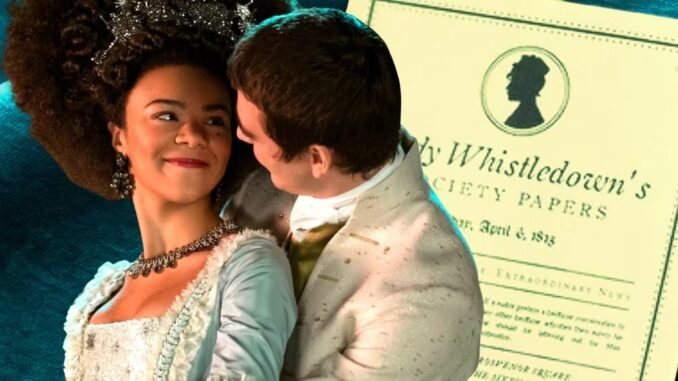
Queen Charlotte’s Lady Whistledown Trick Creates 2 Plot-Holes In Seconds
Lady Whistledown’s return in Bridgerton’s Queen Charlotte spin-off might seem fun, but it breaks her own rules and creates 2 huge plot-holes.
Bridgerton’s first spin-off, Queen Charlotte, surprisingly brings back Lady Whistledown and creates a double-pronged plot-hole in the process. Given the popularity of Julie Andrews’ fake gossip slinger, Queen Charlotte using her as the narrator to set the scene on each episode must have been an easy choice. But thinking about it for more than a minute causes an issue.
Bridgerton of course reveals that Penelope Featherington is Lady Whistledown and was behind the ton’s secret gossip columnist. That happened in 1814 in Bridgerton’s timeline, some 34 years after the events of Queen Charlotte (which predated Penelope’s birth by some way). That in itself isn’t an issue, as the logical assumption would be that the narrative device of using Lady Featherington was merely a point of continuity and could be explained as she wrote the full story down. Even that has a pretty big issue, though.
Why Lady Whistledown’s Queen Charlotte Return Is A Problem

Queen Charlotte changes how Lady Whistledown works in the first few seconds of episode one. Opening with a voiceover that explains to the viewer (not the reader of her gossip sheet) that Queen Charlotte is only inspired by history and is not seeking historical accuracy takes Whistledown out of her own universe. Her voice-overs previously were the actual words of her scandal papers, addressing the residents of the ton (her dear and gentle readers), but to remind the real world audience of Shonda Rhimes’ creativity with history gives Whistledown powers she shouldn’t actually have. That’s problem one.
The Bigger Issue With Lady Whistledown’s Queen Charlotte Role
Even if you put the narrative logic aside and accept that Whistledown is simply writing the history of Queen Charlotte for her readers, there’s an even bigger issue for her being the narrator. There’s no way she could possibly be accurate. As Bridgerton established, Whistledown could only write on the things she saw: when Penelope didn’t attend the royal ball, she was unable to write a single word about it.
The idea, then, that Penelope could retell the most intimate details of a royal marriage that was so tightly kept under wraps – especially because of the concerns of undermining the Crown of King George’s illness was revealed – is ludicrous. There is no logical way of establishing how Whistledown could be aware of the smallest shared details, the disarmed secret intimacies, and the scandalous controversies. But as the narrator, she has to know it all for her role to even work.
Even without the issue of access to Queen Charlotte and King George, or the bedroom of Reynolds and Brimsley, or the solitary walks of Lady Danbury, Whistledown herself said that marriages are secret things whose sanctity she would not mess with. Revealing the true story of Queen Charlotte’s romance and struggles with King George will completely break her own rule. And in the interest of a Bridgerton link, Queen Charlotte forgets way too much of what Lady Whistledown actually is.
